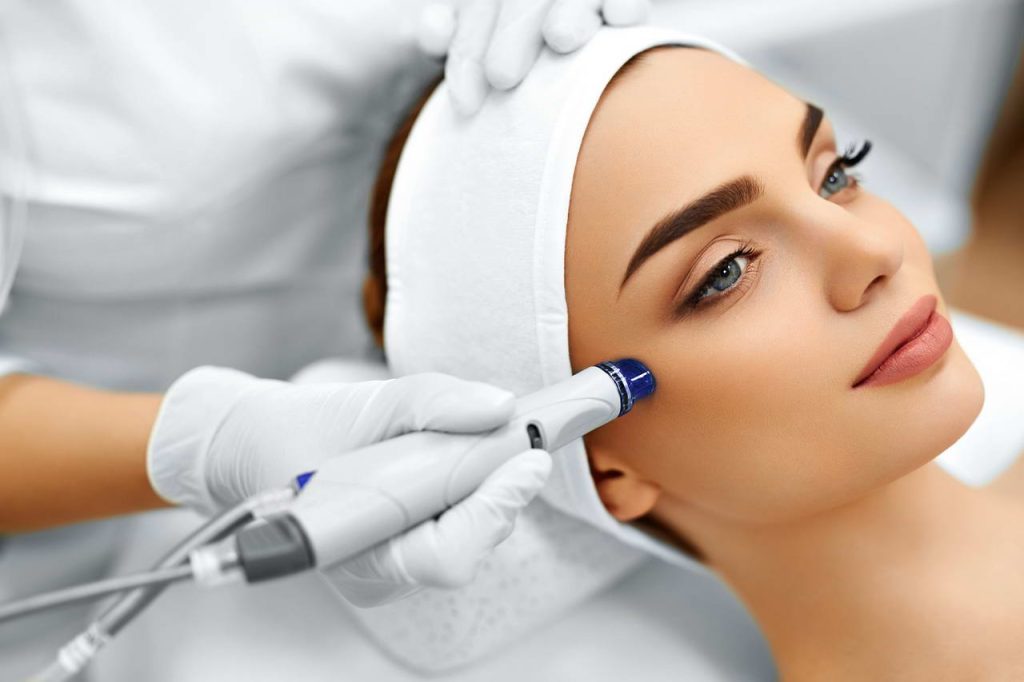
Microdermabrasion is a cosmetic procedure that helps to renew overall skin tone and texture. A skin care specialist helps to remove the top layer of skin with a small hand-held device.
Microdermabrasion works to improve the overall appearance of wrinkles, fine lines, aging, sun damage, acne scars, melasma and other skin conditions. This procedure is safe for all skin types.
A healthcare professional will typically perform the procedure, but there are at-home kits sold in stores as well.
On this page, we will discuss microdermabrasion and its effects in more detail. We’ll also explain the difference between microdermabrasion and dermabrasion, how to prepare for microdermabrasion and some potential side effects.
What is microdermabrasion?
Microdermabrasion is a noninvasive cosmetic procedure. A licensed skin care professional will usually perform the procedure. They will use a handheld device to spray on particles and gently exfoliate the surface by removing the outer layer of skin. A moisturizer and sunscreen will be applied to the skin by the end of the treatment.
The procedure itself should not be painful. Approximately 30 to 40 minutes is allocated for the face while 20 minutes for the neck, according to The American Academy of Dermatology (AAD). A minor swelling or symptoms similar to a sunburn may occur for the next few days.
Approximately 5 to 16 treatments from a skincare specialist are required before an individual begins seeing reduced signs of aging.
Depending on your skin type and reason for seeking microdermabrasion, you can schedule treatments on a weekly, bi-weekly or monthly basis.
Microdermabrasion can rejuvenate any area of the skin, but most people request it on the face and neck. It’s important to note that all results achieved with this procedure are not permanent.
Uses and Benefits
Microdermabrasion aims to improve a person’s overall complexion by making it brighter, smoother and more even in colour.
Microdermabrasion is often requested to improve:
- age spots
- dull complexion
- uneven skin tone and texture
- melasma
- dark spots that appear after acne clears up
To enhance anti-aging or skin-bleaching results, dermatologists may use microdermabrasion. This procedure specifically helps these products to better penetrate the skin.
Risks and Side Effects of Microdermabrasion
Those who have taken the acne medicine, isotretinoin in the last 6 months should wait before they undergo microdermabrasion. These clients are at an increased risk of developing scarring.
If you notice a spot or patch of skin that is growing in size, bleeding or changing in colour, make sure to speak to your doctor. Any of these issues could potentially indicate skin cancer.
Following a microdermabrasion treatment, you may notice these symptoms:
- swelling of skin
- bruising
- redness of skin
- a burning or stinging sensation
- skin is increasingly sensitive to sunlight
It’s important to use sunscreen shortly after the procedure. This will give you the best results and reduce any potential side effects. Those who are prone to getting cold sores or scars easily may not be the best candidates for microdermabrasion.
After the procedure, use sun protection. This can yield the best results and reduce any risk of possible side effects. Microdermabrasion may not be suitable for those who scar easily or suffer from cold sores.
Recovery Time
For most people, there is no need for recovery time after microdermabrasion treatment is completed. If you are experiencing any side effects, it will typically go away after a few days.
After a week, the skin will usually recover enough to receive another microdermabrasion session.
Summary
Microdermabrasion is a cosmetic procedure. For this type of treatment, the goal is to make your complexion both smooth and even in colour.
A series of sessions are typically required for microdermabrasion. A skincare specialist works to remove the top layer of skin with a hand-held device.
The main reasons why people choose microdermabrasion is to reduce any signs of aging and to remove any patches left behind by acne.
It’s important to note that this procedure can have side effects including burning, stinging, swelling and sensitivity to sunlight.
At-home microdermabrasion kits are available, however, a skincare specialist is usually the best to perform the procedure. Always consult a dermatologist before doing a microdermabrasion treatment outside of a clinic.